The Three Rooms project, co-organized by Nam June Paik Art Center, CAC and ZKM in the form of competition, is aimed to discover and support new media artists in Korea, China and Germany. This year, 15 members of the recommendation committee recommended 30 new artists and Kim Heecheon, Yang Jian and Verena Friedrich, who have presented new sensibilities and views in this era of changing technologies and media, are finally selected through screening processes. This project to provide the selected artists with the opportunity to showcase their works internationally in exhibitions on tour at CAC and ZKM is differentiated from other competitions with regional limitations. The participating artists present their own senses and views of the reality changed by technological media by offering a contemporary perspective on the classical representation, the awareness of the media that have become part of our daily life and our perception at the boundary between online and offline respectively. We hope the exhibition Edge of Now will inspire us to think about where we are now and envision the future at the ‘Edge of Now,’ just at the moment to move into the future.
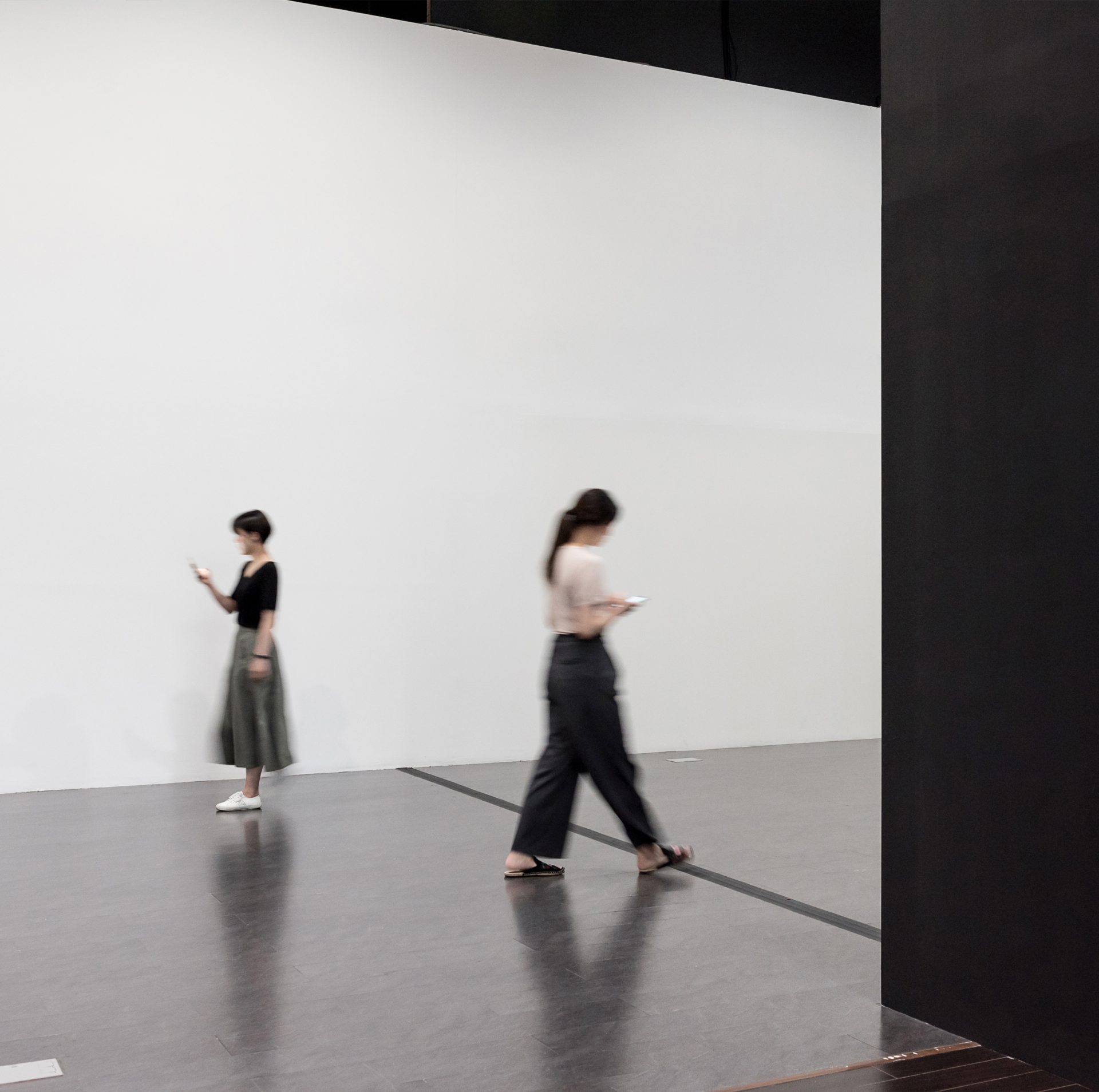
- Venue
- Nam June Paik Art Center, Gallery 2
- Date
- Jul 12— Sep 16, 2018
- Artist
- Kim Heecheon, Yang Jian, Verena Friedrich
- Hosted and Organized by
- Nam June Paik Art Center, Gyeonggi Cultural Foundation
- Curator
Kim Sun Young(Curator, Nam June Paik Art Center)
- In Cooperation with
CAC | Chronus Art Center (China), ZKM | Center for Art and Media Karlsruhe (Germany)
- Supported by
Sandollcloud, Buzzshop, Perrier
-
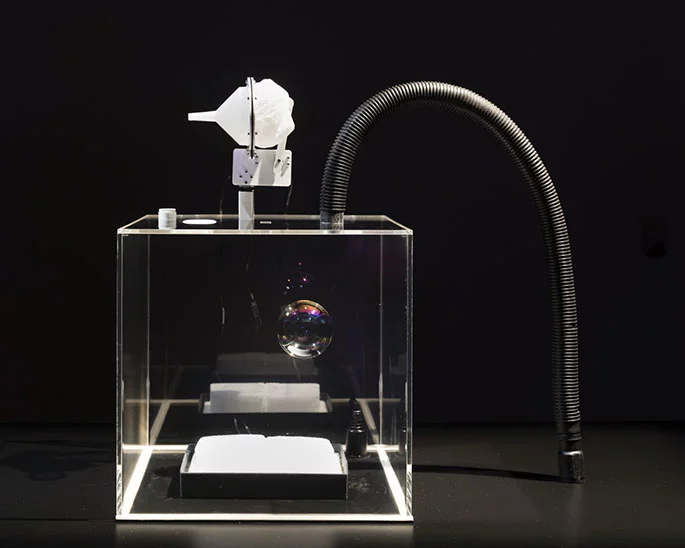
Verena Friedrich, THE LONG NOW

2015/16, installation, experimental table, bubble-making machine, electronics, dry ice, vacuum cleaner, 160×80×150cm
THE LONG NOW was developed in the context of EMARE Move On at OBORO’s New Media Lab and a residency at Perte de Signal, both in Montréal. Supported by the cultural program of the European Commission, the Goethe-Institut, the Conseil des arts et des lettres du Québec, FACT Liverpool and the Kunstfonds Foundation, Germany.Verena Friedrich has presented installation works that expand our views and perceptions of changing technologies and media using organic and electronic media. The artist focuses on the ‘soap bubble’ from a contemporary viewpoint on the basis of technological advancement in addition to analyzing its chemical and physical properties. A soap bubble usually lasting for a few seconds only is a classical ‘vanitas’ symbol that stands for vanity, transience and shortness of life.The objective of the project THE LONG NOW is to extend the lifespan of a soap bubble. A soap bubble is placed in a delicately controlled environment so that it can remain stable for as long as possible. While the evaporation is minimized by keeping temperatures low, other organisms or elements that shorten its lifespan are eliminated as much as possible. The soap bubble produced by an improved manufacturing process inside a scientifically invented device represents ‘vanitas’ in a contemporary context, oscillating between stability and fragility as long as possible.
-
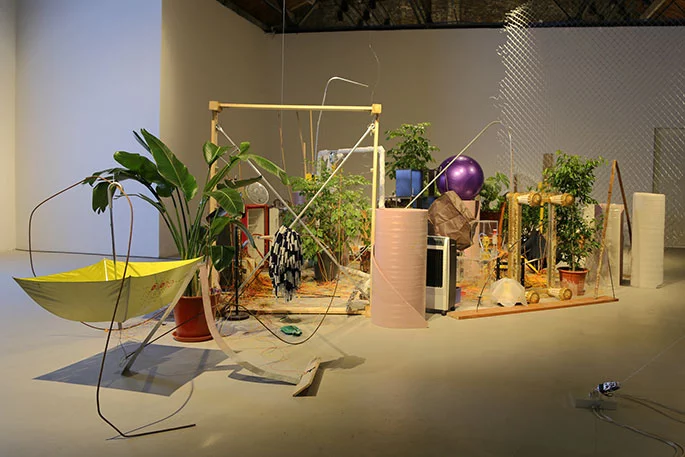
Yang Jian, Forest of Sensors

2008–2017, interactive installation, vibration sensors, alarm lamps, objects, dimension variable
Courtesy of the Artist and WHITE SPACE BEIJING
Yang Jian attempts to create a landscape that evokes the conditions, limitations as well as habitual experiences in our daily life, thereby expanding our perception of ordinary life and inspiring resistance. The exhibition space is occupied by a wide array of everyday objects with sensors on them that he found in a nearby neighborhood, such as potted plants, household appliances and daily necessities. The viewers are invited to play a kind of game in which they have to go through ‘the forest’ with obstacles in between, while not being detected by the sensors. Due to the sensors and obstacles placed in their way, the viewers’ movements are controlled and manipulated. Forest of Sensors illuminates how diverse technological media integrated into our daily lives affect our perceptions and actions. In order to pass through the forest without knowing the way out, one needs to make a variety of movements in the gaps between obstacles: sometimes elegant, agile, clumsy, funny, frustrated…
-
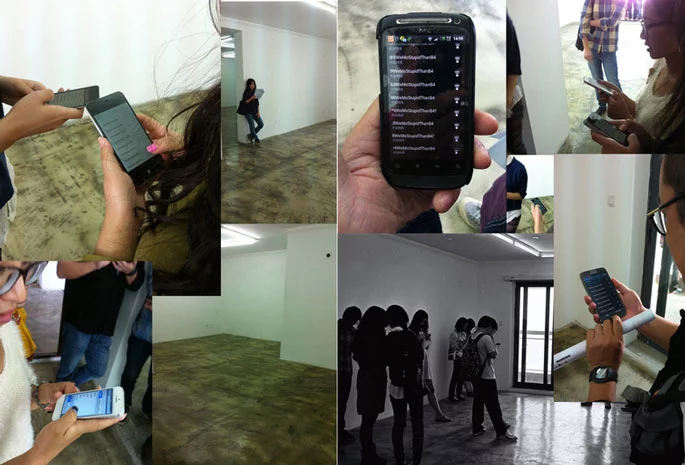
Yang Jian, Wi-Fi

2013, installation, wi-fi routers, dimension variable
Courtesy of the Artist and WHITE SPACE BEIJING
Our logs of activity left in the virtual and physical world as a result of ‘smart living’ can be the objects of observation/analysis to somebody. More than 40 Wi-Fi routers are placed throughout the exhibition space. When the viewers try to get access to wi-fi to start their virtual activity logs, the view of the prison appears on the screens of their mobile phones. The viewers, who are asked dozens of repetitive questions appearing on the screen, need to accept the data the artist presents. The artist pays attention to internet connection, wi-fi routers in particular, which contributes to narrowing the gap between the virtual and physical world. What information are you searching for and adopting from an excessive amount of advertisement and information that trace and select our activities? This project asks if we, who are searching for information in the world unfolding on our the screen, are really ‘smart.’
-

Kim Heecheon, Lifting Barbells

2015, single channel HD video, b/w, sound, 21:22
Kim Heecheon’s work presents his perceptions and senses of space and time in virtual and physical realities based on the expansion of digital interface, including the internet, 3D, GPS and VR. His trilogy in 2015, Lifting Barbells, Soulseek/Pegging/Air-twerking and War Rally Drill captures our cognitive system on the border of online and offline world against the backdrop of Seoul showing signs of a dystopian society as well as ourselves who live in this era, continuing to ‘rally’ as if swinging like a pendulum between physical and virtual spaces and times.In Lifting Barbells, the first part of the trilogy, the artist is in search of his father’s traces that are now left in the form of data after his death last summer. This work portrays the artist’s complicated feelings, his state of mind that has not been synchronized since last summer and his thoughts of Seoul where he lives. A flattened world like a screen and threatening signs of ‘apocalypse’ probably hint at an uncertain destruction of the world without being close to a real apocalypse. In this way, the artist delivers a message of helplessness and hope at the same time.
-
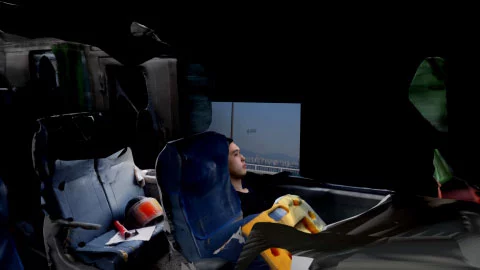
Kim Heecheon, Soulseek Pegging Air-twerking

2015, single channel HD video, color, sound, 21:12
Soulseek/Pegging/Air-twerking is about backing up our activity logs of the physical world in a screened world in order to disappear when necessary. The life of our generation is like mp3 files, something like well-categorized iPod tags, covers, and the satisfaction on your collection actually comes from flipping over iPod’s Cover Flow. And our reality is a poor version of virtual reality. When the reality seeks to pursue a shiny new 3D rendering, virtual reality seeks ‘real’ and ‘humane’ through imitating human inefficiency. This work shows a circle of importing the reality into 3ds Max, a software for 3D modeling, to reconstruct a new world by collecting and connecting the surfaces and exporting it into the reality. From the viewpoint of the artist, the concepts of space and time are no longer significant in our life, which is saved as data, and it is a hard drive capacity for data storage that matters. Ultimately, the artist depicts the present world that has turned into a flat screen again.
-
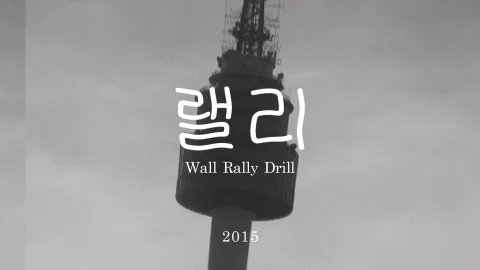
Kim Heecheon, Wall Rally Drill

2015, single channel HD video, b/w, sound, 32:58
Wall Rally Drill tells about the artist’s experience of facing his life split in two – online and offline – in the city of Seoul after his long-distance relationship for 18 months is over. The scenes of flattened Seoul reflected in the window of the building by importing and exporting seem to resemble ourselves, who are seen and see the world through the screens or glasses, standing somewhere between physical and virtual space and time. At the end of the video, the artist and his deceased father appearing on the monitor against the backdrop of the landscape of Seoul face each other silently. This video work explores questions about ‘things that certainly exist in the physical world but with broken links,’ ‘those that no longer exist physically but are left as data,’ as well as what and where are, floating over the screen or the glass like an afterimage. And the rally that is likely to end but never ends continues, while ourselves, who are imported and exported here and there, exist everywhere and nowhere.
Edge of Now











